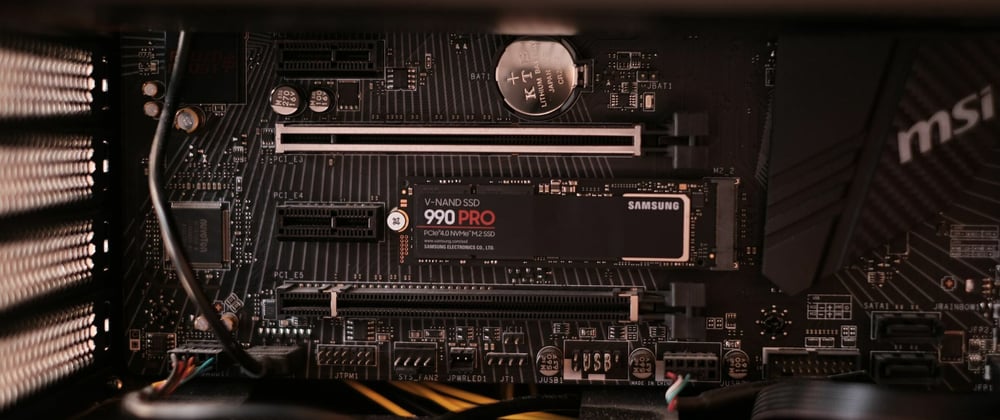Understanding how memory gets allocated in a system is a powerful skill that will help developers write memory-efficient applications as well as optimize existing apps for peak performance. In this article you’ll learn about the following concepts:
What is memory management?
Introduction to memory management in Python with CPython
Known memory problems in Python
How to optimize your Python code for better memory efficiency
What is memory management?
Memory management is the process involving how memory(RAM) in a computer is allocated and deallocated from objects in a Python program. A Python object is stored in memory using a name and then the program can reference the object stored in memory. Memory management plays an important role in ensuring that a computer's main memory is well managed, allocated, and deallocated so that the OS and all the running programs have enough memory to run their operations and processes.
Memory Management in Python
Python has a private heap that contains all the objects and data structures. The Python memory manager takes care of all the memory management aspects such as caching, segmentation, etc allowing Python developers to focus on developing their apps. Memory allocation is done dynamically by the Python memory manager through the Python/ CPython APIs
On the other hand, memory de-allocation in Python is handled automatically by the garbage collector.
CPython, which is an implementation of the Python Language written in C/C++, implements its memory management using a reference count scheme. In Python, each object in memory is assigned a reference count, each time the object gets referenced, the count goes up and once the object gets deallocated, the count is decremented. Once the reference count gets to zero, the object is automatically deallocated from memory.
Memory Problems in Python
Memory management is one of the most prevalent challenges Python developers face. In this section, you’ll learn about some of the effects of poor app memory management.
Memory leaks
Memory leaks in Python, frequently occur when the system doesn’t release the memory taken up by objects that are no longer in use. This often happens when an object is referenced by another object but the reference is never removed and hence the garbage collector is unable to deallocate the unused object from memory. Memory leaks lead to a gradual accumulation of unused memory causing the app to be slow or even crash unexpectedly due to low RAM needed to run the program on the system. This will greatly affect the performance of your app.Cost of running the app
If your app is running in the cloud without good memory management your app will use up the memory of the machine. This will consequently slow down your app which will lead you to upgrade to higher RAM machines. As a consequence, you’ll end up paying more money for the additional RAM you need to run your app on the cloud solution. Over time, this isn’t an optimal solution, since the memory will keep getting bloated and with time you’ll end up upgrading to get even higher memory.Memory bloat
Memory bloat refers to high memory usage by an app over time when it’s running in a system due to poor memory management. This often happens when an app loads high amounts of data into memory but fails to deallocate it when it’s no longer in use. Memory bloat can also be caused by developers using data structures that unnecessarily consume a high amount of memory and then fail to release them when they are no longer in use. These factors increase memory bloat of an app thus leading to higher costs and poor app performance.
Optimizing Memory Management in Python
Picking the best data structures
One of the best ways to write performant, and memory-efficient Python code is by selecting the right data structure to use between a list, tuple, dictionary, and set. When a Python program requests memory greater than 512 bytes from the operating system, it takes a significant amount of time compared to allocate. On the other hand, objects that need memory less than 512 bytes are assigned memory from pre-allocated chunks which is faster. Therefore, when picking the data structures to use in your applications, pick those that take up less than 512 bytes since it takes a longer time to fetch memory chunks from the operating system as opposed to using the pre-defined ones. In most cases, the degradation in the performance of an app is directly related to how often your app gets memory allocated from the operating system. For example, use tuples instead of lists when you have a fixed collection of elements since tuples are immutable and consume less memory.Garbage collection
Garbage collection is the process in which the Python interpreter removes objects that are no longer in use from the memory. This deallocation of unused objects from memory makes it available for other processes running on the system. This is an automated process where Python keeps track of every object that is stored in memory and deallocates objects no longer in use. Garbage collection in Python is either done using reference counting or using the generational collection algorithm. With generational count, when the reference of an object reaches 0 meaning it’s not being used, the garbage collector automatically cleans it from memory. If you have a cycle, the reference count doesn’t reach zero, you wait for the generational garbage collection algorithm to run and clean the object.Setup monitoring tools
Regularly monitor your app’s memory usage using tools such as Scout APM which provides a visualized dashboard of your app’s memory use. Sometimes the Python memory manager may not release unused memory or may not trigger garbage collection. With Scout APM, you can observe real-time performance metrics of your application’s memory footprint and take immediate action to resolve identified issues.Using performant dependencies
Dependencies are the third-party libraries you import into your application. While some of the libraries use significantly low memory while running on your app, some libraries are quite resource-heavy and can end up using a lot of memory. While writing or refactoring your app for performance, you should look into using memory-efficient dependencies and replacing those that will be detrimental to your app's memory usage.
Conclusion
In conclusion, understanding and implementing effective memory management practices in Python is crucial for developing high-performance and memory-efficient applications. By grasping the concepts of memory allocation, deallocation, and the Python memory manager's role, developers can optimize their code for better resource utilization. Recognizing and addressing common memory problems, such as memory leaks, expensive resource consumption, and memory bloat, is essential for app performance. Developers can improve memory efficiency by choosing suitable data structures, using memory-efficient dependencies, utilizing garbage collection, and employing monitoring tools like Scout APM.







Top comments (0)